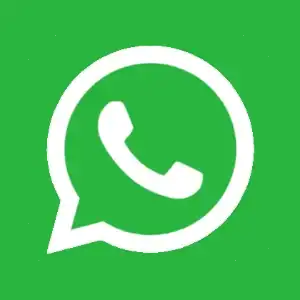What is the UK’s currency called?
The UK’s official currency is called ‘pound sterling’ (abbrievated to GBP).
There are 100 pence (or ‘pee’) to a pound, and coins are issued in bronze denominations of 1p and 2p (called ‘coppers’), and silver denominations of 5p, 10p, 20p and 50p. There is also a silver and gold £1 (commonly called a ‘quid’) and £2 coin.
Paper notes come in denominations of £5 (a ‘fiver’), £10 (a ‘tenner’), £20 and £50. If your wallet is full of £50 notes then good luck trying to spend them in a shop.
Sometimes you might be given a Scottish banknote which looks totally different to the usual ones. They are legal tender throughout the UK so they are perfectly okay to spend, but in practice many shops refuse to take them because they don’t see them very often. If this happens to you then don’t worry, just feed it into a vending machine or spend it in one of the big high-street stores or train stations instead.
Foreign currency exchange rates
This should be taken as a rough guide only, as exchange rates fluctuate from day-to-day.
| British pounds | £1 = €1.18 | Euros |
|---|---|---|
| Euros | €1 = 84p | British pounds |
| British pounds | £1 = $1.31 | US dollars |
| US dollars | $1 = 76p | British pounds |
| British pounds | £1 = $1.64 | Canada dollars |
| Canada dollars | $1 = 60p | British pounds |
| British pounds | £1 = $1.75 | Australian dollars |
| Australian dollars | $1 = 57p | British pounds |
| British pounds | £1 = ¥159 | Japanese yen |
| Japanese yen | ¥1 = 1p | British pounds |
| British pounds | £1 = ¥8.32 | Chinese yuan |
| Chinese yuan | ¥1 = 12p | British pounds |
| British pounds | £1 = | Russian rubles |
| Russian rubles | British pounds | |
| British pounds | £1 = ₹99 | Indian rupees |
| Indian rupees | ₹1 = 1p | British pounds |
Can you use foreign bank cards in London?
Foreign credit and debit cards are widely accepted in London, especially Cirrus, Delta, EuroCard, Maestro, MasterCard and Visa. American Express and Diner’s Club are not as widely accepted as they once were – it’s really just the big expensive places that accept them.
Cash machines (also known as cashpoints or ATMs) can be found all over London. Be aware that some of them charge a small amount for withdrawals (typically £1.50–£2). If it’s going to charge then you should see a warning sign on the screen, or pasted by the side of it. The cash machines inside pubs, shops and tourist attractions will usually charge you every time. If you want to avoid a charge then use the ones at petrol stations or banks.
It’s usually a wise idea to give your bank a quick ring before using your card abroad, because they might block it if they suspect unusual activity – and buying things overseas will be viewed as unusual.
You might also want to get your PIN number changed before you arrive in London. Apparently a lot of the foreign cards have a six-digit PIN instead of the UK’s four. Our cash machines will only accept a four-digit PIN, so you could find yourself with a bit of a problem.
Business opening hours in London
This should be taken as a rough guide only as individual businesses will have their own opening times.
| Shops | 9 AM to 6 PM (Mon-Sat); 11 AM to 4 PM (Sun); Big stores usually have a late opening once a week, typically on a Thursday, when they’ll stay open until 7 PM or 8 PM |
|---|---|
| Supermarkets | 8 AM to 10 PM (Mon-Sat); 11 AM to 4 PM (Sun) |
| Attractions | 10 AM to 5 PM (Mon-Sun); Last entry is usually one hour before closing; Big art galleries usually have a late opening once a week, typically on a Friday |
| Restaurants | 12 noon to 3 PM, and 6 PM to 11 PM (Mon-Sun) |
| Pubs & Bars | 11 AM to 11.30 PM (Mon-Sat); 12 noon to 10.30 PM (Sun) |
| Nightclubs | 10 PM to 3 AM (Mon-Sat); 8 PM to midnight (Sun) |
| Banks | 9.30 AM to 5 PM (Mon-Fri); 10 AM to 4 PM (Sat); Closed (Sun) |
| Post offices | 9 AM to 5 PM (Mon-Fri); 9 AM to 12 noon (Sat); Closed (Sun) |
| Pharmacies | 9 AM to 6 PM (Mon-Sat); 10 AM to 5 PM (Sun) |
Tipping etiquette in London
This should be taken as a rough guide only, as you’re free to tip however much you like.
| Taxi drivers | 10% of the fare is an oft-quoted figure, but it is more usual for people to round up to the nearest pound, or £5, and then wave away any change |
|---|---|
| Restaurants | 10% of the bill – but check the small-print on the menu or your bill, because they might already have included a ‘service charge’ |
| Pubs & Bars | Nothing. Nobody expects a tip in a pub. If you really want to tip them then you can say “and one for yourself” and let them keep the change |
| Hotel maids | Maids in 4★ and 5★ hotels might expect £1-£2 per day (up to a maximum of £5-£10) left on one of the room’s tables at the end of your stay, but don’t bother for smaller hotels |
| Hotel porters | Porters in 4★ and 5★ hotels might expect £1-£2 per bag (up to a maximum of £5) as they leave the room, or £1-£2 for hailing a cab, but don’t bother for smaller hotels |
| Hotel concierge | £5-£10 if they’ve performed a service for you |
Cost of living – Typical prices in London
This will give you an idea about how much money everyday items, restaurant meals and attractions cost in London. All prices are quoted for one person only.
The prices will be at their highest in the more touristy areas like Covent Garden and the West End.
| Fast food meal (e.g. McDonalds) | £4.50 to £6.50 |
|---|---|
| Meal at a pub/cheap restaurant | £10 to £18 |
| Meal at a mid-range restaurant | £16 to £30 |
| Meal at an expensive restaurant | £30+ |
| Supermarket sandwich | £1.10 to £3 |
| Packet of crisps | 70p to £1 |
| Chocolate bar | 60p to £1 |
| Pint of beer | £4 to £5.30 |
| Cup of coffee | £2.50 to £3.50 |
| Cup of tea | £1.90 to £2.25 |
| Can of Coke | 80p to £1.50 |
| Bottled water | 50p to £1.20 |
| Cigarettes (pack of 20) | £13 to £14 |
| Tourist attraction | free to £30 |
| Theatre ticket | £18 to £115 |
| Music concert | £15 to £100 |
| Cinema ticket | £12 to £22 |
| Postage stamps | See posting letters |
| Train fare | See London train fares |
| Bus fare | See London bus fares |
| Taxi fare | See London taxi fares |
Popular shopping areas in London
The most famous shopping streets in London are Oxford Street and Regent Street. Oxford Street is best-known for Selfridges whilst Regent Street has got Liberty, Hamleys and lots of big-name clothes stores.
You’ll find plenty more department stores in Kensington High Street, Marylebone High Street and King’s Road (just off Sloane Square). And Knightsbridge is where you’ll find Harvey Nichols and the most famous shop of all: Harrods.
If you’re looking for boutique clothing stores then try Carnaby Street and the area around Seven Dials (north of Covent Garden). The street markets in Camden Town are good for cheap clothes and cheap jewellery.
Expensive men’s tailoring and custom-fit suits are best bought from Savile Row and Jermyn Street.
Expensive jewellery and antiques can be found in the streets behind St. James’s Palace and around Bond Street – that’s where you’ll find famous names like Cartier, Rolex and Tiffany’s. There are some very expensive little shops in Burlington Arcade and the Royal Exchange as well.
You might like to try the London Silver Vaults in Chancery Lane as well. This huge underground vault is home to more than thirty silver dealers, selling everything from £25 to £25,000. And Portobello Road has a famous antiques market every Saturday (it’s all fruit, food and clothes on the other days).
The historic town centre in Greenwich has lots of interesting shops selling old books and antiques, and the market in the central piazza of Covent Garden is a great place to look for handmade crafts and gifts. Gabriel’s Wharf is another great place to find little craft shops.
If you want some Royal souvenirs then try the official Buckingham Palace shop at 7 Buckingham Palace Road (although we think the Royal Mews gift shop over the road is better, because it sells a wider range of stuff). They’ve also got a little Royal section in Harrods. It was near the toy department the last time we looked, but they keep shifting all their stuff around every five minutes.
The Houses of Parliament gift shop is on the corner of Parliament Square (diagonally opposite the Winston Churchill statue). Sherlock Holmes themed-gifts can be bought from the big gift shop inside the Sherlock Homes Museum, and if you’re after some Shakespeare books then try the shop inside the Globe Theatre (it sounds obvious, but you’d be surprised how many people don’t think of trying places like that).
The biggest concentration of book stores can be found down Charing Cross Road (near Leicester Square). That is also where you’ll find the largest bookstore in London – Foyles. Large branches of Hatchards and Waterstones can be found down Piccadilly, and there’s another big branch of Waterstones by Trafalgar Square.
If you want travel books and maps then your best bet is Stanfords in Long Acre by Covent Garden. And if you’re looking for art books then don’t forget the gift shops at the National Gallery, Tate Britain and Tate Modern.
Military books can be found at the Imperial War Museum. If you want old antiquarian books then there are lots of dusty little shops around the British Museum (start in Great Russell Street and have a wander around from there).
Hamleys is the best place for kid’s toys, and Natural History Museum and Science Museum gift shops are good for stocking fillers.
If you’re after electrical goods and computer stores then head for Tottenham Court Road.
If you want some fancy food and chocolates then try the food halls in Harrods and Fortnum & Mason. Posh English teas can be found in both those shops, plus the historic Twinings Tea Shop down the Strand. Borough Market also has some very nice food… but that’s probably better as a place to have your lunch, rather than gift-buying.
And finally… if you just want to buy some simple souvenirs of London (T-shirts, postcards, cups and keyrings – that sort of thing), then there are plenty of touristy shops around Leicester Square and Piccadilly Circus.
 Twitter
Twitter Facebook
Facebook Bluesky
Bluesky WhatsApp
WhatsApp Email
Email